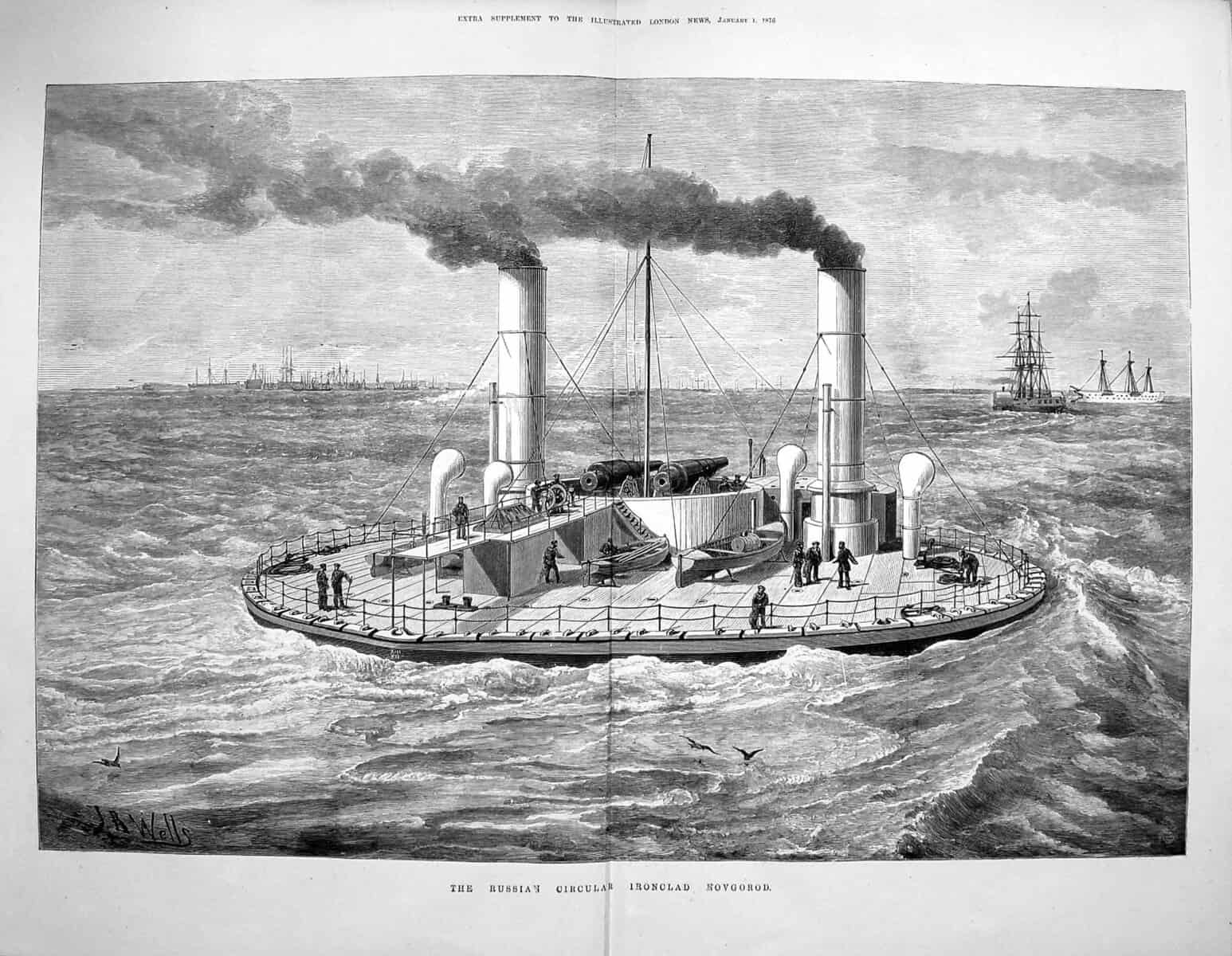
ADVERTISEMENT - CONTINUE READING BELOW
10. The Russian Round Ship (Part 1)
In 1874, the Russian Navy commissioned the Novgorod, a monitor ship with a controversial design: it had a round hull. It quickly gained infamy as one of the worst ships in history. So clumsy it was compared to a floating soup dish, the 2500-ton Novgorod had six steam engines that drove six propeller screws. On the plus side, the ship was largely immune to ramming – a common tactic of the day – because it featured a 9-inch armored belt, its round shape deflected strikes, and its vital components were well inside the hull. It sported a pair of 11-inch guns, which were powerful for the era. It’s shape and flat bottom also gave it a draft of only 12 feet, allowing it to operate close to the coastline in shallow waters. Unfortunately, the Novgorod’s advantages were eclipsed by serious disadvantages.
The circular hull impaired handling. The Novgorod was unsteerable in a storm, and even in calm weather, it took 45 minutes to make a full circle. In rough seas, the wide flat bottom made the ship pitch so hard, that its propellers came out of the water. When moving, the blunt hull did not slice through the water to reduce its resistance, but pushed large volumes of water out of the way by sheer brute force. That made the ship extremely fuel-inefficient, causing it to consume coal at a prodigious rate. Besides design defects, the Novgorod had manufacturing defects as well. Low quality materials and shoddy workmanship caused recurring problems with the ship’s propulsion, from blades to shaft to drive, that lasted throughout the vessel’s entire career. Additionally, the Novgorod suffered from poor ventilation that no amount of troubleshooting could fix, even after installing ventilation cowls on the gun emplacements.

